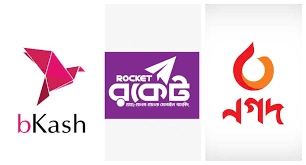Digital transformation has been revolutionizing industries across the board, and the restaurant industry is no exception. As technology advances and becomes more accessible, restaurant owners are turning to digital solutions to improve their operations and enhance the customer experience.
The restaurant industry has historically been slow to adopt new technology, with many businesses relying on traditional methods of operation. However, the COVID-19 pandemic has forced restaurants to adapt to a rapidly changing environment, and many have turned to digital solutions to stay afloat.
One of the most significant areas of digital transformation in the restaurant industry is online ordering. With the rise of delivery services like Uber Eats and DoorDash, many restaurants have begun offering online ordering through these platforms. However, some restaurants are also developing their own online ordering systems, allowing customers to place orders directly through their website or mobile app. This not only allows for more efficient ordering and delivery but also provides valuable customer data that can be used to improve the customer experience. Another area of digital transformation is the use of digital menus.




Digital menus can be updated in real-time, allowing restaurants to make changes quickly and easily. They can also include images and descriptions of each dish, making it easier for customers to decide what to order. Some restaurants have even started using QR codes on tables that link to digital menus, eliminating the need for physical menus altogether.
Mobile payment systems are also becoming increasingly popular in the restaurant industry. With mobile payment solutions like Apple Pay and Google Wallet, customers can pay for their meals directly from their smartphones, eliminating the need for cash or credit cards. This not only makes the payment process more convenient for customers but also speeds up table turnover and reduces wait times.
Digital transformation has also impacted the back-end operations of restaurants. Many restaurants are now using digital solutions for inventory management, employee scheduling, and other administrative tasks. This not only makes these tasks more efficient but also provides valuable data that can be used to optimize operations and reduce costs.
Finally, digital marketing has become an essential part of the restaurant industry. Social media platforms like Instagram and Facebook allow restaurants to reach a larger audience and promote their brand. Email marketing campaigns can also be used to keep customers informed about specials, events, and new menu items.

Why digital Transformation is needed for restaurant owners:
In today’s fast-paced, digital world, every industry is rapidly evolving to keep up with the latest technological advancements. The restaurant industry is no exception, and there are several compelling reasons why restaurant operations should be digitalized.
Firstly, digitalizing restaurant operations leads to increased efficiency. With digital solutions, tasks such as order-taking, payment processing, and inventory management can be automated. This means that staff can focus on providing better customer service and reducing wait times, which can lead to higher customer satisfaction and increased revenue.
Another significant benefit of digitalizing restaurant operations is the ability to collect and analyze data. By using digital systems to manage orders, customer feedback, and inventory, restaurant owners can gain valuable insights into their business operations. This data can be used to make informed decisions about menu changes, pricing, and marketing strategies.
Digitalizing restaurant operations also leads to improved communication between staff members. For example, digital communication tools can be used to send messages and updates in real-time, reducing the need for staff to physically communicate with one another. This leads to a more streamlined and efficient operation, which can save time and increase productivity.
Furthermore, digitalization can enhance the customer experience. With online ordering and payment processing, customers can place orders and pay for their meals quickly and easily. Digital menus can provide more detailed information about menu items, such as ingredients and nutritional information, making it easier for customers to make informed decisions about what to order. Additionally, mobile payment solutions such as Apple Pay and Google Wallet can reduce wait times, resulting in a more pleasant customer experience.
Lastly, digitalizing restaurant operations can help to future-proof a business. In today’s rapidly evolving technological landscape, businesses that fail to adapt risk being left behind. By implementing digital solutions, restaurants can stay up-to-date with the latest technological advancements and remain competitive in an increasingly digital world.
In conclusion, digitalizing restaurant operations has numerous benefits, including increased efficiency, data analysis, improved communication, enhanced customer experience, and future-proofing the business. With the rise of technology, it’s becoming increasingly clear that digitalization is essential for restaurants looking to remain competitive and meet the demands of modern customers.
In conclusion, digital transformation is changing the restaurant industry in significant ways. Online ordering, digital menus, mobile payments, back-end solutions, and digital marketing are just a few examples of how technology is revolutionizing the way restaurants operate. As technology continues to evolve, it will be important for restaurants to stay up to date with the latest digital solutions to remain competitive and provide the best possible customer experience.



































